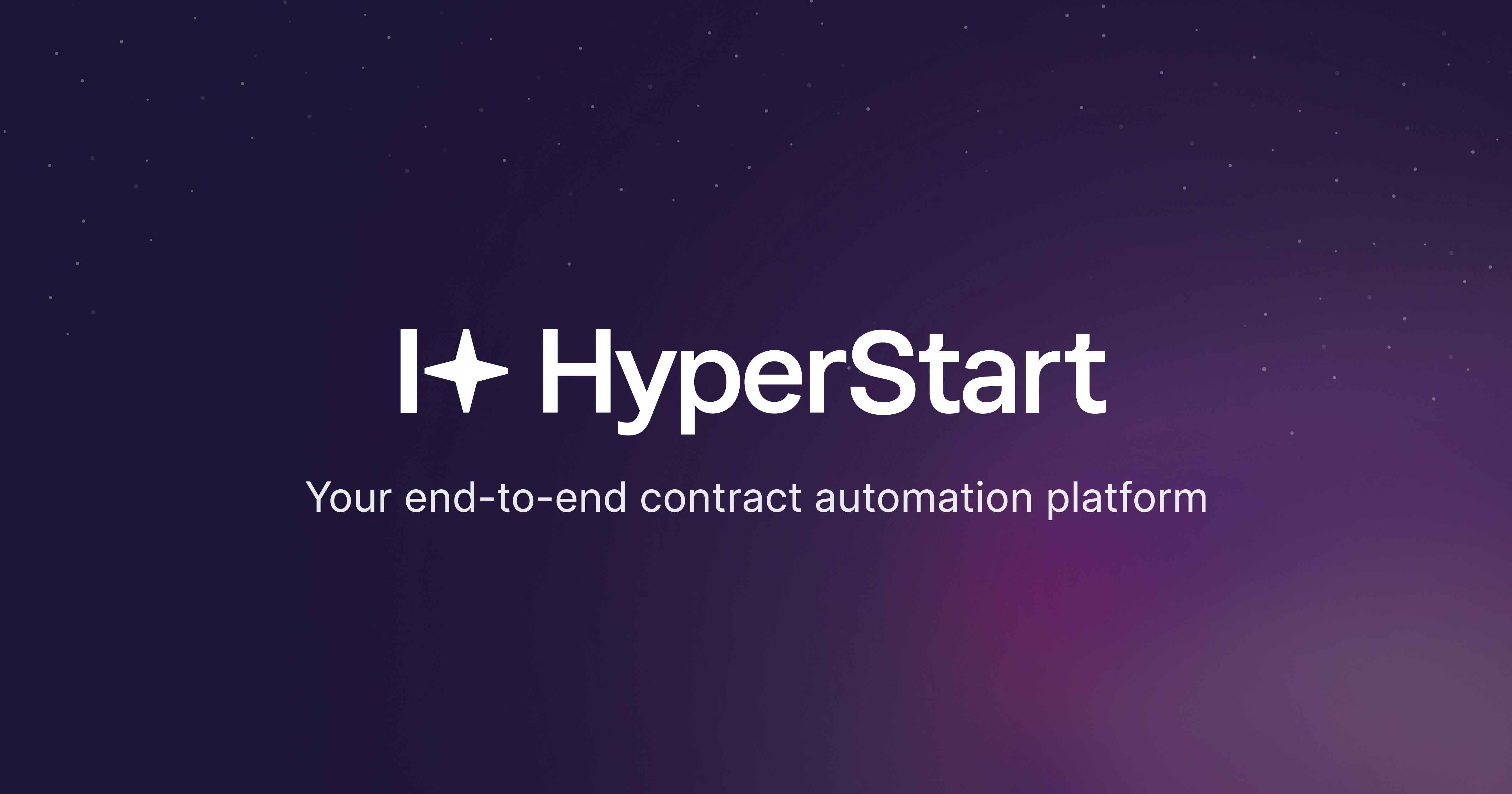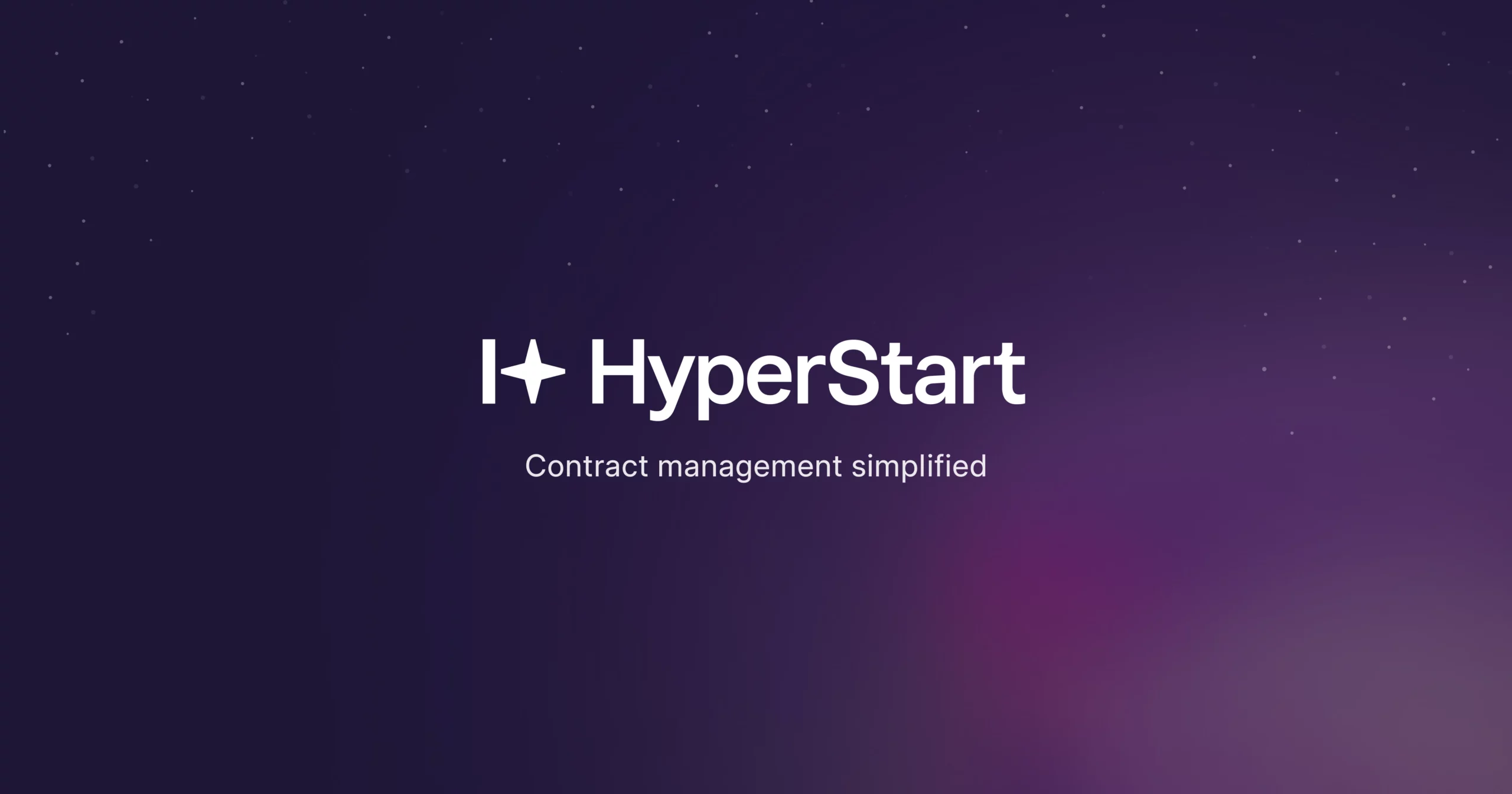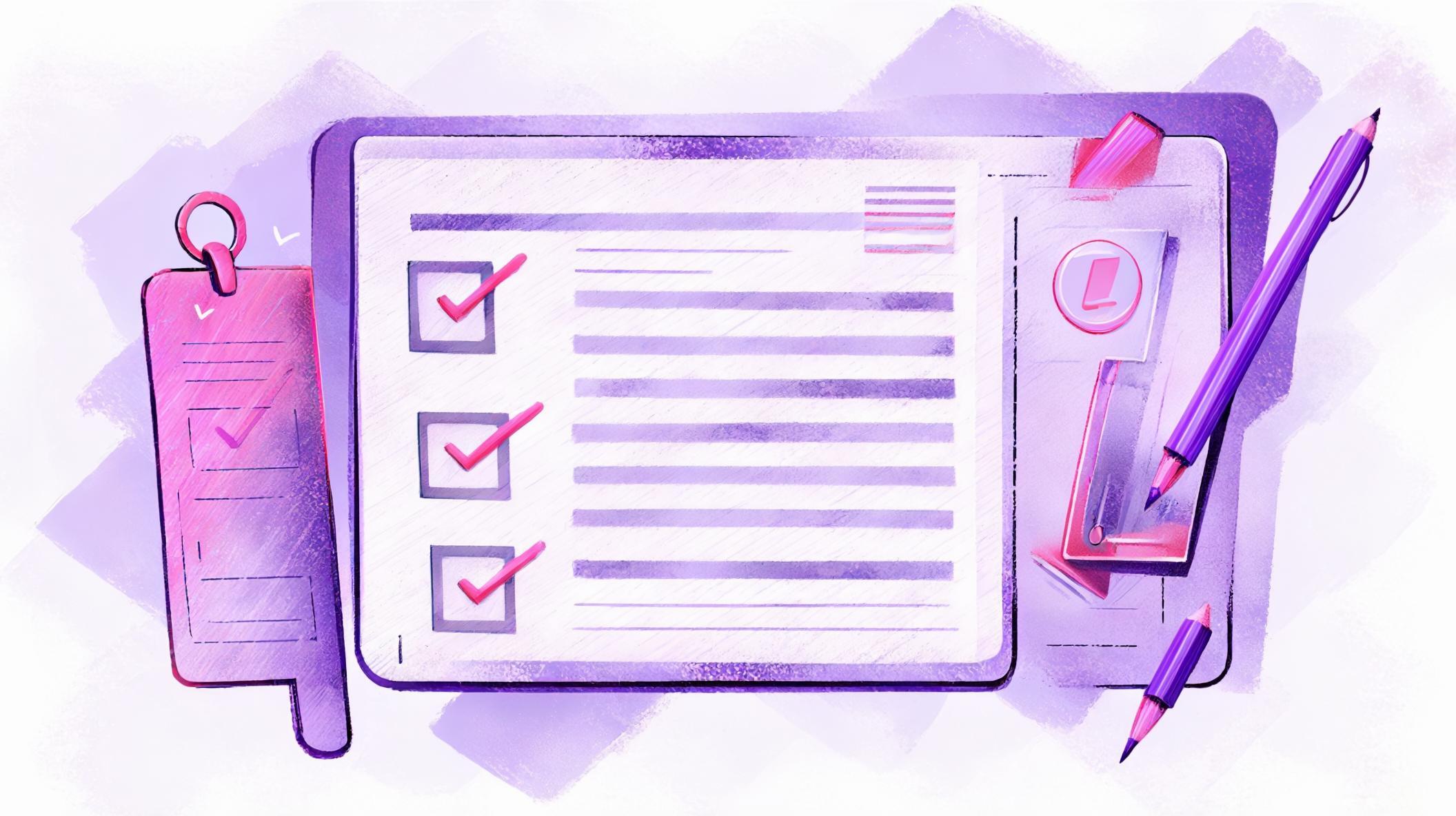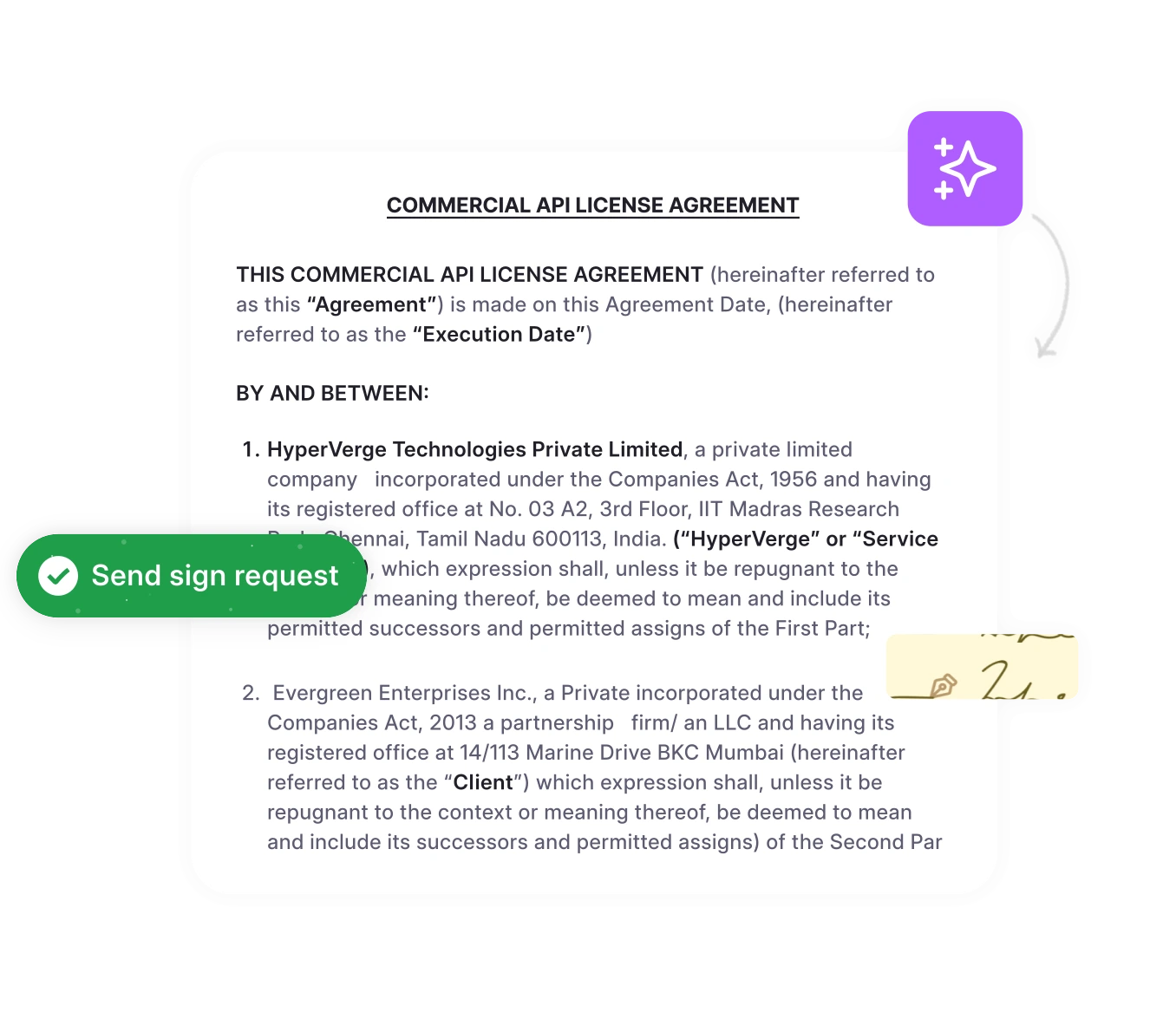Knowing how to write a contract is one of the most essential business skills, and getting it wrong can lead to costly setbacks. Delays in approvals, vague language, and inconsistent terms often slow deals, create confusion, and increase the risk of disputes.
Despite these challenges, many teams still rely on manual drafting methods, juggling scattered documents, endless email chains, and outdated templates. This not only disrupts deal cycles but also undermines the clarity and enforceability of the agreement.
To overcome these issues, businesses need a straightforward, structured approach to contract creation—one that ensures accuracy, consistency, and alignment with organizational goals. In the following guide, you’ll be walked through a step-by-step process for drafting agreements that are precise, enforceable, and tailored to the needs of both parties.
Whether you’re creating your first agreement or managing a portfolio of complex, high-value contracts, these steps will help you protect your interests, close deals faster, and build stronger business relationships.
What is a contract?
A contract is a legally binding agreement between two or more parties that creates enforceable obligations. For a contract to be legally valid, it must contain three essential elements: mutual agreement (offer and acceptance), consideration (exchange of value), and legal capacity (all parties must be legally able to enter the agreement).
Contract vs. agreement: Understanding the distinction
While all contracts are agreements, not all agreements are legally enforceable contracts. The key difference lies in enforceability—contracts create legal obligations that courts will uphold, while informal agreements may lack the necessary elements for legal enforcement.
Knowing what a contract is sets the stage for exploring the variety of agreements businesses rely on. Let’s look at the five most common types of business contracts.
What are the 5 most common types of business contracts?
Businesses rely on a variety of contracts to define relationships, allocate risk, and ensure obligations are met. Here are the five types you will encounter most frequently.
1. Sales contracts
Sales contracts govern revenue-generating activities, including purchase orders, sales agreements, and product distribution deals. These contracts specify what’s being sold, pricing, delivery terms, and payment schedules.
Industry-Specific Examples:
- SaaS Companies: Software licensing agreements, subscription terms, and API usage contracts
- Legal Services: Client engagement letters, fee agreements, and retainer contracts
- Healthcare: Equipment purchase agreements, pharmaceutical supply contracts
- Financial Services: Securities purchase agreements, loan documentation
HyperStart’s contract repository organizes all your sales contracts with 94% accuracy through metadata extraction. Find any pricing term, renewal date, or liability clause in seconds instead of hours.
2. Employment contracts
Employment contracts cover hiring arrangements, consulting relationships, and freelance agreements. They define compensation, job responsibilities, confidentiality requirements, and termination procedures.
They define compensation, job responsibilities, confidentiality requirements, and termination procedures.
Industry Considerations:
- Legal Services: Partner track agreements, confidentiality clauses for client privilege
- Healthcare: HIPAA compliance requirements, credentialing obligations
- Financial Services: Regulatory compliance training, fiduciary responsibilities
- SaaS/Technology: IP assignment clauses, non-compete considerations for developers
3. Service agreements
Professional service contracts outline relationships with vendors, consultants, and service providers. They establish the scope of work, deliverables, timelines, and performance standards.
Role-Specific Focus:
- General Counsel: Outside counsel agreements, legal technology service contracts
- Legal Operations: Process improvement consulting, legal tech implementation services
- Sales Operations: CRM services, sales automation platforms, lead generation services
4. Partnership contracts
Partnership agreements govern business relationships between companies, including joint ventures, strategic alliances, and collaboration arrangements. These contracts address profit sharing, decision-making authority, and exit strategies. To streamline your partnership contract creation, explore our detailed partnership agreement template.
5. Real estate contracts
Real estate agreements include property leases, purchase agreements, and facility management contracts. They cover property use, maintenance responsibilities, and rental or purchase terms.
While contract templates can accelerate drafting for standard agreements, complex or high-value contracts often require custom drafting to address specific business needs and risk factors. HyperStart’s template library helps you draft in minutes.
Draft contracts smarter, not harder
Use HyperStart’s template library and compliance checks to create clear, enforceable contracts faster and reduce manual errors.
Book a DemoIdentifying contract types is only the first step. To create enforceable agreements, legal teams must follow a structured, step-by-step writing process.
1. Define the contract purpose and parties
Identify all parties with full legal names, addresses, and titles. Verify corporate authorization and legal contractual capacity. Clearly state the contract’s purpose—whether it’s a service, product sale, or partnership. Standardize party identification through approved databases to save drafting time and ensure accuracy.
HyperStart automatically validates party information and suggests standardized legal entity names from our database of verified corporate records.
2. Research legal requirements and compliance
Determine the governing law and jurisdiction. Check industry-specific regulations, such as HIPAA for healthcare or SOX for finance. Consider federal, state, local, and international rules, including employment, environmental, and data privacy laws. AI tools can flag potential compliance issues automatically.HyperStart’s AI automatically flags potential contract compliance issues with 94% accuracy, drawing from our processing of 1B+ documents across regulated industries.
3. Structure your contract framework
Organize contracts with sections for parties, recitals, definitions, scope, payment, performance standards, legal protections, and signatures. Use consistent headings, numbered sections, and white space for clarity. Apply templates for routine agreements and custom drafts for complex deals.
HyperStart Template Management: Access centralized template libraries with built-in contract approval workflows. Legal teams create standardized templates that business users can customize within approved parameters, reducing drafting time while maintaining legal oversight.
4. Draft core terms and conditions
Define parties, scope of work, deliverables, quality standards, deadlines, and acceptance criteria. Specify payment obligations, schedules, invoicing, and penalties. Include milestone timelines, performance metrics, and remedies for unmet standards to reduce disputes.
5. Include essential legal protections
Outline termination procedures, both voluntary and for cause. Decide on contract dispute resolution methods—litigation, arbitration, or mediation. Include force majeure clauses and indemnification obligations. Clarify intellectual property ownership and usage rights.
6. Address contract risk management
Set liability limits, damage exclusions, and carve-outs for intentional misconduct. Define insurance requirements and warranties, along with remedies for breach of contract. Use analytics to identify common risk patterns and standardize mitigation strategies. HyperStart’s AI analytics identify common risk patterns from 1B+ processed documents, helping you standardize mitigation strategies based on proven successful contracts.
7. Review, revise, and validate
Establish a systematic review with legal counsel, business teams, and SMEs. Use checklists to ensure completeness and compliance. AI tools can detect missing clauses or inconsistencies, speeding up validation and maintaining standards. HyperStart’s AI contract review detects missing clauses and inconsistencies in minutes vs. hours of manual review, maintaining standards while accelerating validation.
HyperStart Review Workflows: Automated review workflows route contracts to appropriate reviewers, track changes, and maintain comprehensive audit trails. Legal teams, business stakeholders, and external parties collaborate seamlessly with full version control.
8. Execute and manage the contract lifecycle
Use valid signatures—wet signature, electronic, or digital. Store contracts securely with search capabilities for easy access. Track obligations, deadlines, and renewals. CLM platforms automate monitoring, send reminders, and provide performance and compliance analytics. HyperStart automates obligation monitoring and renewal tracking – never miss a deadline again.
HyperStart Lifecycle Management Features:
- Real-time contract status tracking with Salesforce integration for sales velocity
- Automated renewal alerts 30/60/90 days before expiration
- AI-powered search finds any contract or clause in seconds
- Obligation tracking prevents compliance gaps and missed commitments
- Analytics dashboard provides strategic insights from contract data
Even experienced drafters can make errors. Recognizing the most common mistakes helps legal teams avoid pitfalls that could compromise contract validity or clarity.
What are the most common contract writing mistakes to avoid?
Even experienced drafters can make errors that compromise enforceability or clarity. Recognizing these common pitfalls helps legal teams prevent costly mistakes.
1. Vague or ambiguous language
Undefined terms like “reasonable efforts” or “commercially reasonable” create uncertainty that can lead to disputes. Always define key terms clearly and specifically.
HyperStart Solution: AI-playbook automatically flags ambiguous terms during contract review and suggests preferred clauses.
2. Missing essential terms
Incomplete payment terms, delivery specifications, or performance standards leave contracts vulnerable to disputes and enforcement problems. Use comprehensive checklists to ensure all essential elements are included.
HyperStart Solution: This platform automatically checks contracts against industry-specific compliance standards that you configure.
3. Ignoring governing law
Failing to specify which jurisdiction’s laws apply and which courts have jurisdiction creates uncertainty in dispute resolution. Always include clear governing law and jurisdiction clauses.
4. Overlooking liability issues
Inadequate attention to risk allocation and liability limitations can expose organizations to unexpected legal and financial exposure. Carefully consider and address liability issues in every contract.
5. Poor version control
Working with outdated contract drafts or failing to track changes during negotiations can lead to errors and confusion. Implement systematic version control procedures to maintain accuracy.
HypersStart Solution: HyperStart eliminates version control problems with automated tracking of all contract activity in audit trails. Every change is documented, and teams always work with the current version.
Collaborate seamlessly on contract drafting
HyperStart streamlines review workflows so legal teams, business stakeholders, and external parties can work together efficiently with full version control.
Book a DemoAvoiding mistakes is essential, but following best practices ensures contracts are clear, enforceable, and aligned with organizational goals.
What are the best contract writing practices for legal teams?
Beyond avoiding mistakes, adopting best practices elevates contract quality, strengthens compliance, and improves collaboration across teams.
1. Use clear, plain language
Avoid unnecessary legalese and complex terminology that obscures meaning. Write contracts that business stakeholders can understand while maintaining legal precision. Clear language reduces disputes and improves contract compliance.
Effective contract drafting should prioritize clarity and simplicity—using direct, simple, and accurate language rather than stilted legal jargon or standard templates that may not fit specific contexts or jurisdictions. Tailor contracts to the relationship and goals of the parties involved to avoid ambiguity and disputes.
2. Be specific and measurable
Define all key terms precisely and use measurable criteria whenever possible. Instead of “reasonable efforts,” specify “best efforts” or define exactly what actions constitute adequate performance.
3. Anticipate common scenarios
Address likely dispute scenarios upfront rather than leaving them to future interpretation. Consider what could go wrong and build appropriate protections and remedies into the contract.
4. Maintain consistency
Use consistent terminology throughout the contract and across your organization’s contract portfolio. Standardized language reduces confusion and makes contract management more efficient. HyperStart maintains organization-wide terminology standards and automatically suggests consistent language across all pre-configured contract types.
Precise and consistent language in contracts is essential to avoid misunderstandings that could lead to costly legal disputes. For example, in technical or specialized fields, consistent terminology prevents errors and helps maintain safety and compliance, which could otherwise lead to significant financial and reputational damage.
5. Document everything
Create comprehensive audit trails for contract development, negotiations, and modifications. Proper documentation protects your organization and provides valuable insights for future contract negotiations. With HyperStart, complete activity logging and audit trails are automatically maintained, providing comprehensive documentation for compliance and future negotiations.
Best practices are easier to implement with the right tools. Contract Lifecycle Management platforms streamline drafting, approvals, and version control, reducing manual effort and errors
How to write contracts with CLM platforms?
Using Contract Lifecycle Management (CLM) platforms streamlines drafting, approval, and tracking processes—making contract creation faster, more accurate, and easier to manage.
Let’s have a look at the 5 ways CLM platforms help in drafting contracts.
1. Streamlined template management
Modern Contract Lifecycle Management platforms provide centralized template libraries with built-in approval workflows. Legal teams can create standardized templates that business users can customize within approved parameters, reducing drafting time while maintaining legal oversight.
2. AI-powered clause libraries
CLM platforms offer intelligent clause libraries that suggest appropriate language based on contract type, industry, and risk profile. These systems learn from successful contracts to recommend optimal terms and identify potential improvements.
3. Automated compliance integration
Advanced CLM systems automatically incorporate regulatory requirements and company policies into contract templates. This ensures every contract meets compliance standards without manual checking, reducing risk while accelerating creation.
4. Collaborative review workflows
CLM platforms enable seamless collaboration between legal teams, business stakeholders, and external parties. Automated review workflows route contracts to appropriate reviewers, track changes, and maintain comprehensive audit trails.
5. Real-time analytics and insights
These platforms provide data-driven insights into contract performance, negotiation patterns, and risk factors. Legal teams can use this intelligence to optimize contract terms and negotiate more effectively.
Turn templates into smart contracts
Centralize your contract templates and leverage AI suggestions to draft contracts that are accurate, consistent, and aligned with your organization’s standards.
Book a DemoFrom manual drafting to intelligent contract management with HyperStart
Effective contracts balance legal precision with business practicality. While the 8-step drafting process ensures thoroughness, the future lies in combining human expertise with AI.
Leading legal teams now use HyperStart’s AI-powered platform to process contracts 80% faster with 95% metadata accuracy, implementing solutions in just 4-6 weeks for traditional CLM platforms. This shift moves teams from contract chaos to organized operations, automating routine drafting and review while freeing legal professionals for strategic work.
Real Customer Transformations:
LeadSquared Success Story: LeadSquared’s Legal Counsel Head, Om Prakash Pandey, shares: “We took demos of around 5 CLM vendors and chose to go with HyperStart. They were the only CLM vendor that had SOC2 compliance and met the criteria of around 22 parameters, which we had evaluated them on.”
Qapita Implementation Excellence: Company Secretary Mayuri Jaltare reports: “Implementation was very smooth. Using the smart import feature, all contracts were migrated to the system within minutes. I was also able to see the AI extracted metadata on the tool immediately, which was impressive.”
HyperStart’s Unique Advantages:
- AI-native platform built on HyperVerge’s 1B+ document processing experience
- 4-6 weeks implementation vs. 6+ months for competitors like Ironclad
- 5X faster contract reviews with 95% AI accuracy
- Never miss a renewal again with automated obligation tracking
- Salesforce integration for legal-sales harmony and deal velocity
Transform your contract operations from chaos to organized efficiency—schedule a personalized demo to see how top legal teams boost productivity without compromising quality.












